'I have seen him evolve and mature, both as a person and a captain.'

Sanjay Bangar's tenure as India's batting coach was instrumental in Indian batsmen improving by leaps and bounds.
Bangar's five-year stint saw a major improvement in the batting performances of Virat Kohli, Ajinkya Rahane, Cheteshwar Pujara and K L Rahul among others.
Who can forget Kohli's dream run with the bat in England in 2018 when the India captain amassed 593 in the five Test series to make up for his failures with the bat on the previous tour to England four years earlier?
Under Bangar, Pujara's batting blossomed and he underlined his status as one of Test cricket's leading batsmen with 521 runs in Australia, helping India register their first Test series win Down Under in 2019.
Rahane continues to be one of India's most consistent performers overseas while the opening duo of Rohit Sharma and Shikhar Dhawan have emerged as worldbeaters in One-Day Internationals.
In the final segment of a three-part interview with Rediff.com's Harish Kotian, Bangar reveals how he went about improving the batting skills of Kohli & Co.
- Part 1: Exclusive! How this man transformed India's batting
- Part 2: 'Sourav always showed faith in me'
What was key for Kohli's performance in the 2018 series against England? What areas did you work on?
The beauty of Virat Kohli's mental approach is that he never stops learning.
Overall, he had made adjustments to his alignment and his bottom hand grip. Prior to the England tour, we practiced under damp conditions in Mumbai.
He worked tirelessly to play close to the body induced by a box we created.
It was a tremendous exhibition of batsmanship and discipline from Virat.
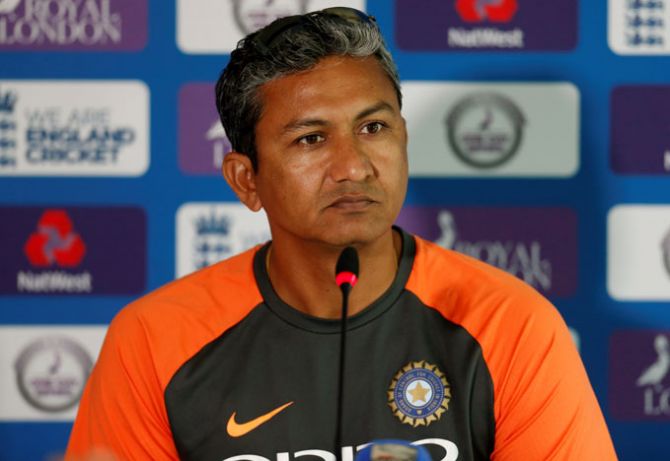
How much has Kohli improved as captain? He had to suddenly take over the Test captaincy after M S Dhoni quit in the middle of the Australia series in 2014?
He is already India's most successful Test captain.
Except for elusive ICC titles, his record as ODI captain has also been equally impressive.
And apart from the figures, I have seen him evolve and mature, both as a person and a captain.
The Rohit Sharma-Shikhar Dhawan opening combination in limited overs cricket shaped up really well during your tenure with the Indian team.
The duo share an incredible record in ODIs, since they started opening together in 2013, with 4,802 runs in 107 innings, with 16 century stands -- the second most in ODIs after Sachin Tendulkar and Sourav Ganguly's 21.
What would say made the Rohit-Shikhar click as the opening pair for India in the limited overs format?
As the batting coach, how did you work on ensuring that they delivered on a consistent basis because the hallmark of the duo batting together was how they adjusted to each other?
There is terrific understanding between the two of them. They operate with different templates, they switch the roles of being the aggressor or playing second fiddle when needed.
Shikhar, who earlier relied a lot on square cuts and cover drives, gradually developed his game where he is scoring in all areas of the ground.
Rohit raised his game to another level when the team needed him to do the most, whether it was a series decider or the all-important World Cup. He committed himself to finish games for the side.
Rohit worked tirelessly to achieve an ideal head position which not only provided him optimum balance, but also reduced his tendency to LBW decisions.
Their opening success together with Virat's consistency contributed to India's ODI success in conditions across the world.
Someone like Ajinkya Rahane was India's go-to man in overseas condition, but somehow he seems to have lost that consistency. Where do you think he needs to improve?
In all the four major Test match victories overseas in Johannesburg, Nottingham, Adelaide, Rahane has made vital contributions to the winning cause.
The only thing he would have wanted is to convert those 70s or 80s into 100s and the perception then would have been so very different.
He has been on the circuit for seven years and one is bound to have certain periods, which he encountered in Indian conditions.
K L Rahul has transformed his game, taking it to another level. When he came into the team, he was more of a defence-oriented player, but after a few seasons in the IPL he developed the power game.
What has been key to his improvement and success in the last couple of years?
His record from 2014-2018 was outstanding, both in India and abroad.
We worked on his back lift, towards increasing his scoring areas, as also on awareness of how to optimally use angles.
Unfortunately, his success in T20 format coincided with a lean patch in Test cricket, but he has shown that he is one player who is willing to do multiple roles for the team.
Are you happy with the young crop of batsmen coming through like Mayank Agarwal and Shreyas Iyer, both of whom forced their way through with consistent performances in domestic cricket?
The success of Mayank and Shreyas has highlighted the fact that 3 to 4 years of domestic grind is good for any upcoming batsmen as he then knows how to handle the ups and downs and develops an understanding of his own game.
Fast bowlers can be fast tracked, but not young batsmen.
Rishabh Pant started off with a bang with centuries in Tests in England and Australia, but later lost confidence and was dropped. Do you think his inconsistent showing with the gloves affected his batting as well?
He is one of those rare players who has got hundreds in their first series in England and Australia.
He showed in the home series against the West Indies that he could bat as per the situations. He will continue to evolve as a wicket-keeper.
We need to be patient with such precocious talent.
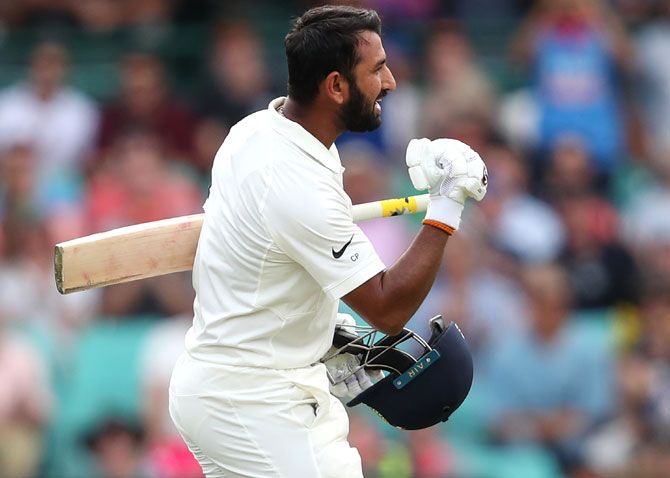
Cheteshwar Pujara was India's hero with the bat in Australia in 2018-19, but before that he came under the scanner a few times.
His slow approach came into question, especially in South Africa in 2018.
How has Pujara reinvented himself in Test cricket?
He did well in the England series too, but in Australia he was spectacular.
The way he negated the Nathan Lyon threat by continuous use of feet and also tiring out the fast bowlers helped the team's cause immensely.
We did tweak a few technical things collectively, but there shall always be a place for Pujara's style of batting for the strokeplayers around him to flourish.
With cricket going the way it is and T20s taking over, will we see batsmen like Pujara in future generations? Or will young cricketers in the years to come want to develop their game to suit the T20 format?
If the cricket administrators continue to put proven Test performers on Grade A contracts/or in the top-most category, then surely there are number of cricketers in the first class set up who lay the foundation of their game for the longer format.
How much has batting changed since the time you started playing in terms of technique and approach? Has T20 cricket taken batting to a completely different level?
In best case scenarios, a batsmen should watch the ball and react to it subconsciously.
However, due to the demands of T20 cricket, batsmen are always premeditating shots or the areas they want to score and with hard hands too.
Such tendencies eventually creep into the longer format, which are detrimental to the approach required in the longer format.
How long will it take for cricketers to hit their stride? For batsmen to get their timing, for bowlers to get their rhythm? It has been nearly four months without any outdoor practice.
I guess a three week period should be good enough for any team travelling abroad for quarantine, acclimatisation and preparation to get back in rhythm.


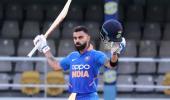

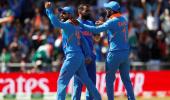




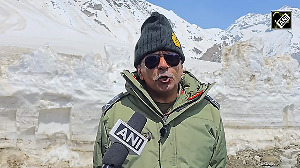
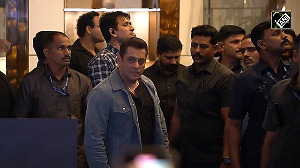
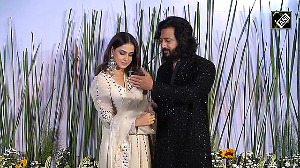

 © 2025
© 2025